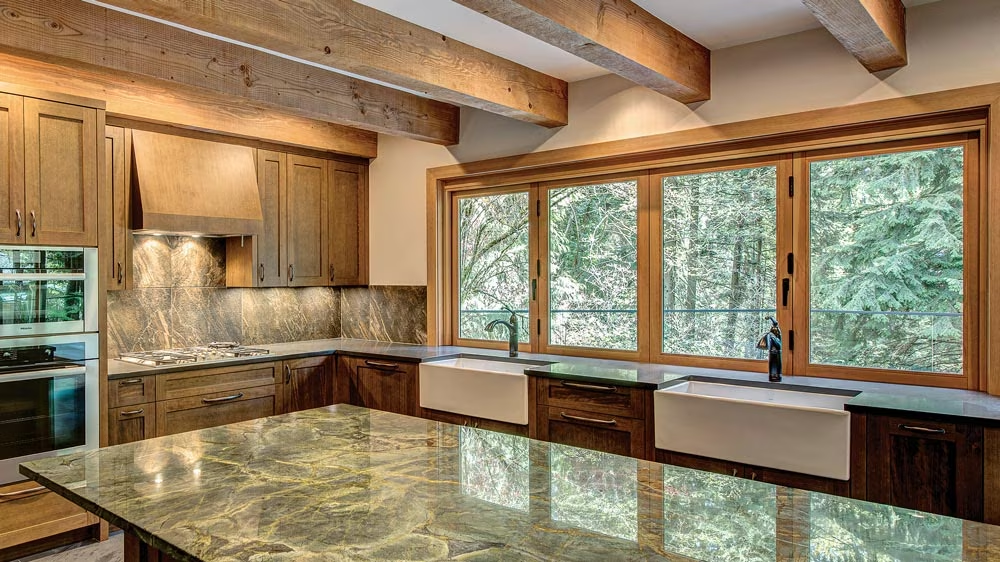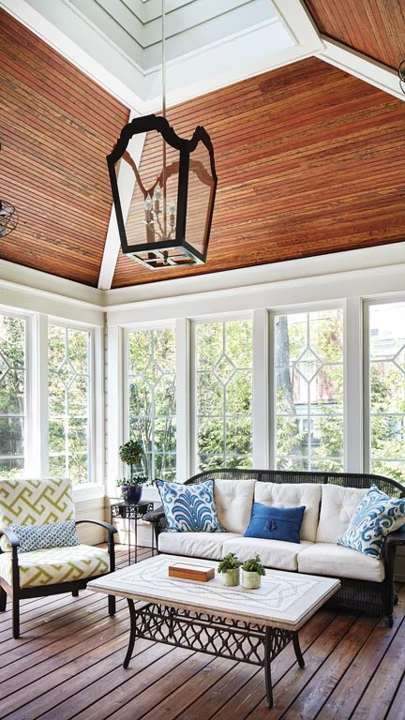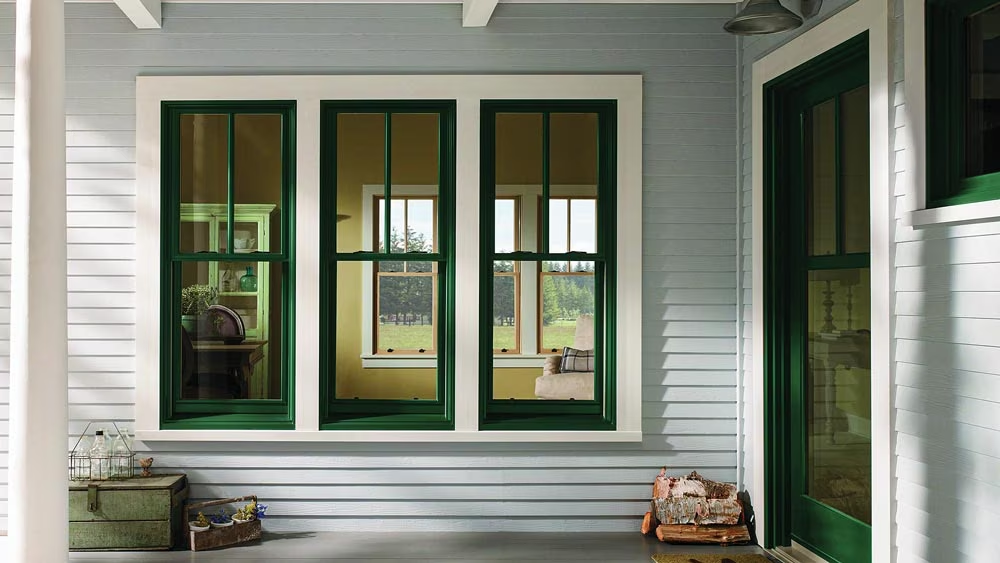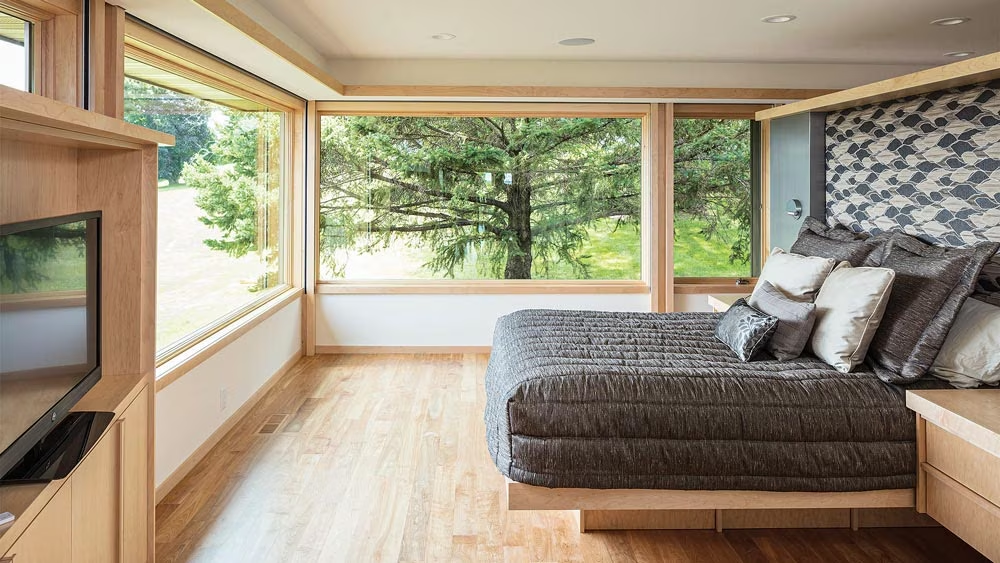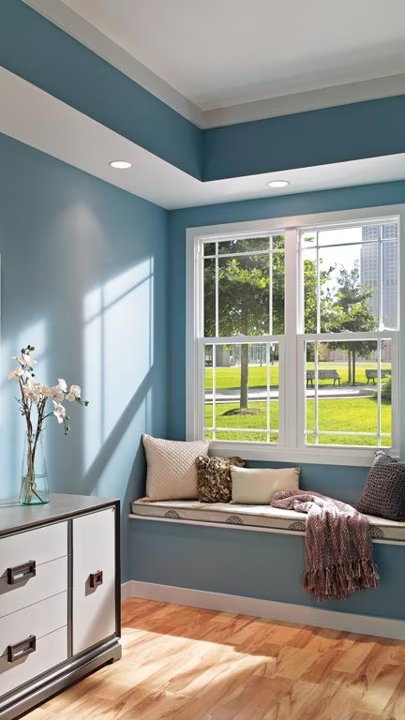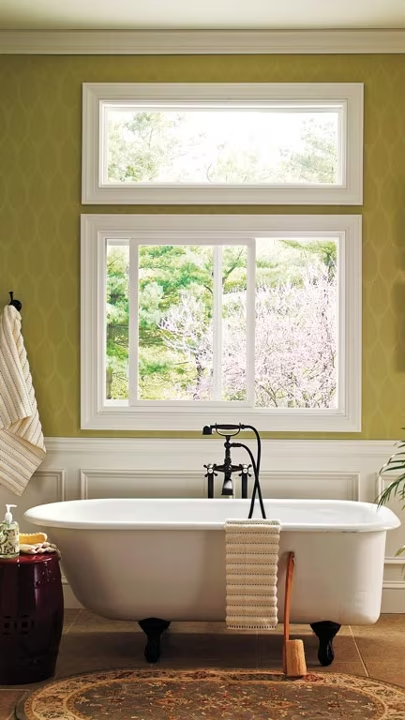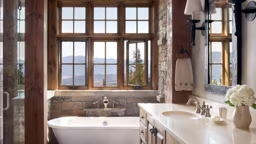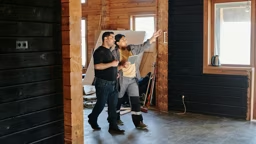All About the View
You Want: Clear sight lines to gorgeous viewsBest Pick: Large spans of glass with minimal interruption
When it comes to windows with a large, viewable area, you’ve got options: floor-to-ceiling picture windows; bay or bow windows; sliding windows; or casement windows devoid of frames or hinges to obstruct the views. For killer great room views on a budget, skip the pricey picture window and create a wall of glass with groups of standard-sized windows.
Tip: Avoid stand-out features, such as grids or brightly colored mullions.
Pretty as a Picture
You Want: Extra style on your interiors and exteriorsBest Pick: Windows with eye-catching design features
It’s easier than ever to use your windows to add architectural flair to your home. To boost curb appeal and interior style, colored frames are a great place to start. Skip traditional brown, white and cream in favor of stunning black, soothing gray, historic barn red, woodsy green or refreshing coastal blue.
Tip: For even more architectural oomph, add decorative features, like stained or leaded glass details or special hardware.
Clean as a Whistle
You Want: Clean and sparkly windows — without the hassleBest Pick: Windows with special easy-cleaning features
The days of paying a pro (or hauling out a ladder and garden hose) to keep your views streak-free are long gone. Today’s manufacturers offer design features that make quick work of window washing. For effortless cleaning, look to either casement windows, which open to a 90-degree angle allowing for the glass to be cleaned from the inside, and double-hung windows, which have an operable upper and lower sash that allow the windows to tilt-in for safe cleaning from your home’s interiors.
Tip: Avoid protruding features, such as mullions, that can trap dirt.
Save Your Energy
You Want: Energy-efficient windows that seal out the cold and sunBest Pick: Windows with eco features, such as low-E coatings and gas fills
Homes in extreme climates call for windows that can stand up to the challenge. The heat gained and lost through windows accounts for up to half of a home’s heating and cooling needs, according to U.S. Department of Energy. Windows with low-E coatings are best for keeping interiors cool in warmer climates, while double or triple-paned windows filled with gas (typically non-toxic argon) are known for preventing cool air from penetrating in colder climates.
Tip: Look for the National Fenestration Rating Council (NFRC) label to ascertain a window’s energy performance.
Window Shopping
The secret to choosing great windows is to shop prepared. Here’s a rundown of popular window styles.
Single-Hung
Single-hung windows are the most common. They’re so named because only the bottom sash opens, while the top sash is fixed in place.
- Pros: Single-hung windows are the least expensive, and they’re so common that they are available in virtually any size or material.
- Cons: While they’re simple to operate, they can be prone to sticking and lack some of the advantages of more elaborate window styles.
Double-Hung
Double-hung windows look like the single-hung variety, but both the bottom and top sash can open.
- Pros: They give you the freedom of opening either sash, which enhances air flow and is safer for children or pets. Many double-hung windows have tilt-in sashes for easy cleaning.
- Cons: You can expect to pay a bit more for the convenience of a double-hung.
Slider
Imagine a double- or single-hung window turned on its side, and you’ve got a slider. As the name suggests, these panels slide open horizontally rather than vertically.
- Pros: Sliders create a good, energy-efficient seal. They’re also easier to open than vertical double- or single-hung windows.
- Cons: Not available in as many sizes or materials as double- or single-hung windows, and since only half the window can be opened at one time, they don’t allow in as much breeze as casement windows do.
Casement
Casement windows are hinged at the side and crank open, usually to a full 90 degrees.
- Pros: Casements are the easiest to operate, offer the best view, allow the most airflow and create the tightest seal for energy efficiency.
- Cons: They can get damaged if left open in the rain, are not a good choice for high-traffic areas like decks and patios and lack the middle rails and other design features of single- and double-hung windows.




